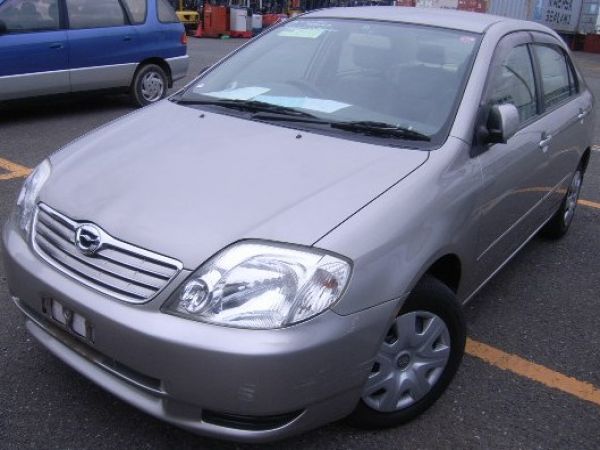Hi,
I read your article: ‘Why pay to repair a car when that money can buy you a new one?’ That was a great piece of work, well written.
I own a 2012 Mazda Demio for which I replaced the front suspension less than a two months ago. One month later the suspension felt like it was never replaced. I haven’t spoken to the mechanic since then, well, until today when I got the engine warning light.
I had no option really. I will need to replace the front, and rear suspension soon as well as the gear box mounting.
I am not so sure where to get genuine parts, at a competitive price. Kindly let me know.
Dan
Hi Dan,
Yes, you will need to redo the suspension based on your own narrative, and the gearbox mounting as well (I have no idea where this stemmed from, but hey, it’s your car); but I have to ask: why ignore the engine warning light? Trust me, the check engine light literally means CHECK YOUR ENGINE, because that is where the issue causing the light to glow is arising from. It has nothing to do with suspension or a gearbox mounting. Find someone with an OBD II diagnostic machine and download the error codes to see what’s going on there.
As for parts; this depends on where you are located. I found this out the hard way during the recently concluded Great Run XVI where I searched fruitlessly in Karatina town for an AC pulley to replace the noisy failure I suffered in the 1KD-powered J120 Prado that I slung into the fearsome Chalbi Desert way up north, leading me to wonder how and why sundry Toyota parts would be missing from shops in a town so near to the city and served by so many KD-family engines in the shape of the Hiace H200 “7L” passenger van and the selfsame Land Cruiser Prado SUV I was driving; but this is a story for another day. The short version is: a lot of parts for common vehicle brands can be found in Nairobi if not the nearest major town centre to where you currently are.
If not, there is always the Internet. You can never go wrong with the Internet — OK, actually you can, but this too is a story for another day — but the point is, on the Internet you can either find someone selling the exact part you are looking for or you can import the part yourself if nobody seems to have it at hand. Pricing will depend on who and where you ask, I cannot vouch for anybody.
Dear Barasa,
I am a great fan of your articles, they are very helpful so keep up the good job! I have a Nissan Tiida 2008. When switching to slow speeds (below 20kph) from high speeds I feel the car jerking. Feels like it is braking itself. Could it be the gearbox?
Noel
Hi Noel,
Have you checked your ATF levels?
Then again perhaps it’s not a drivetrain issue but something related to your Honda-owning friends’ woes below: faulty IAC valve or MAF sensor, clogged injectors or whatnot; again this is remote diagnosis based on a description as vague as “jerking while sowing down” so I cannot come up with a conclusive answer.
Dear sir,
I have a Honda Airwave station wagon YOM 2007 but locally imported in 2014. The car ran very smoothly for three years without issues. Then in late 2017, the gear developed a jerking problem especially when slowing down in a traffic jam. I changed the gear box but the problem persisted. Eventually, the new gear box failed as well. I have tried changing a few components; throttle body, Coils, Gear box, but the engine revs are unreliable and behave erratically. The car hardly picks to beyond 80kph. In addition, it cannot go uphill at more than 30Kmph no matter the gradient. What could be the problem?
Martin
Hi Martin,
Perhaps it is time to part out that car, for both logical and ethical reasons. This, I believe is not the first (or second or third) time I will write this: diagnosing a vehicle by correspondence is not a sure-fire application of automotive repair protocols; more so when the motor vehicle in question has had the gearbox changed umpteen times.
There seems to be a lot that has happened to that car and its “medical” history is a potentially long one that I am not sure you have narrated fully or comprehensively.
So? The ethical angle is self-explanatory and can be summed up as a single question that I once encountered in an old article in the Reader’s Digest magazine: are you selling a car or a problem?
Yours is clearly the latter, so if you want to recover as much of your outlay as possible without resorting to being a liar outright, it’s best to sell the car piecemeal than as a whole.
The logical recommendation is to break down the car and sell off the parts. It will fetch a lot more than selling the vehicle as is since its current faults will drive the buying price so far south even the Australians will describe it as being “down under”. You could alternatively continue guessing and changing things until the vehicle eventually works …
Or! Or! … you could join my forum where an 85,000-strong membership means there is no shortage of experts (and jokers too, in the interests of full disclosure) so the knowledge base is as wide as it is deep, discourse is vibrant and you will definitely find a solution there, that I can bet. Unlike your mechanics, I am not a huge fan of guesswork or pot luck; which is why I will opt to be non-committal this time round despite the high hit rate in remote diagnosis that this column has had over the past decade.
My apologies in not offering a technical solution but I hope you see my view. Repetition ad nauseam is the bane of any self-respecting writer but here goes anyway: modern cars are fiendishly complex machines and problems that arise could either be simple and straightforward or the result of a chain of unfortunate events stemming from unrelated sources. In light of that, check your car’s transmission control module, or “the gearbox computer” for those who are light on jargon.
Hi Baraza,
I am an avid reader of your column. I recently bought a Honda Airwave 2009, locally used. Sometimes when I start it and put it on drive or reverse mode, it goes off. Some people are telling me it is a cut out problem others tell me it is sensor between the engine and the gear box. Can you help please? It makes me restless.
Maritim Evans
Hi,
Another problematic Airwave with drivetrain issues … certainly not a good look for Honda this week. However, unlike your friend above, your problem seems a bit specific so we can have a go at it.
The prime suspect here is a faulty torque converter. The root causes of this could be dirty fluid, overheating or problems with stall speed. The first two requires simple physical checks but the third requires a slightly elaborate process and some information gleaned from the vehicle manual.
There are other causes as to why an automatic car would stall when a gear is engaged in the transmission. These are a faulty IAC valve (idle air control), faulty TPS (throttle position sensor), wonky O2 (oxygen) sensors or clogged injectors.
There is yet another electromechanical explanation which may be what your friends are trying to tell you: the neutral cut out switch in the gearbox may be linked to the engine management computer (ECU) over and above the ignition cut out (which is why you can’t start an automatic car when it’s in gear). The neutral cut out could be short-circuiting when reverse or drive is engaged, which then sends a kill signal to the ECU which in turn shuts the engine down. That cut out switch may need to be looked at.
Hi Baraza,
Your car clinic column is very helpful for us Kenyans, it’s great your vehicle reviews and motoring discussions are focused on our Kenyan environment; the ex-Japan vehicles we buy, the state of our roads, our fuel quality, spare parts availability etc. I have learnt a lot from being regular reader of your column, especially why not to buy a used German car.
What’s your take on the performance of Subaru Impreza XV, 2012? Do you recommend it?
Nancy
Hi Nancy,
I do not “not recommend” the Subaru XV. Let me explain that double negative:
I only recommend cars that I have tried, tested and found to be true. What I have not found is my way into the crow’s nest at the helm of an XV so I don’t know what that car is all about, so I can’t recommend it … yet. However, I cannot say I don’t recommend it because that sounds dismissive of the vehicle which is absolutely not the case here: I could be sending you away from the one vehicle that suits all your purposes, however peculiar or specific they may be.
(Speaking of peculiar, the XV follows the Subaru design thesis word for word, and is therefore a strange-looking object; just like 95 per cent of its ancestors and relatives — but this is a heavily subjective matter of taste and Subaru’s chronic deficiency in the hormones of comeliness has never bothered me; the talents and abilities these cars bring to the table far outweigh their visual worth — or the lack thereof — as magazine pullouts or wall hangings.)
I hope you understand the double negative now. I don’t recommend the XV because I have no definite experience with it, but I don’t not recommend the XV because: when is the last time Subaru gave us a failure of a car, ever, at all, except, perhaps, maybe, for the Vivio that embarrassed one Patrick Njiru at a local rally in the early ’90s by underperforming worse than an uninspired, uneducated civil servant in an intellectually-heavy government docket?
If you want performance in a Subaru, get one with a turbo, that goes without saying. The XV doesn’t have a turbo. That should answer your question without me having to “trash” any brands or “not recommend” any models.
[Addendum: BBC’s Top Gear division says the XV is better than most competitors off-road but is let down by its engine and gearbox which, frankly, is stating the obvious. It has no turbo and Subaru’s recent fixation on characterless and charisma-free CVTs easily explain the Beeb’s observations]
HOW TO TEST THE STALL SPEED
1. Place chocks behind the wheels of the car to prevent it from moving and engage the parking brake.
2. Press the foot brake as hard as you can — all the way down — and crank the engine. Shift from Park to Drive with your foot still firmly on the brake pedal. Do NOT release the foot brake and do NOT touch the accelerator … yet.
3. With one foot still firmly on the brake, depress the accelerator pedal for about 5 seconds. Check your tachometer to see if the readout is lower than the figure given in the vehicle manual.
4. Once done, release the accelerator first, then the brake. You do not want to launch the car into a wall.
SOURCE: nation.co.ke







![Top 20 Used Cars to Avoid Buying in Kenya – [PHOTOS]](../../../blog/wp-content/uploads/2013/11/top-used-unreliable-cars-to-avoid2-80x60.jpg)

![Here are some of the best tuned cars in kenya by state of the art garages [PHOTOS]](../../../blog/wp-content/uploads/2013/11/29402_10151301757042065_340470732_n-e1384498044289.jpg)


![Top 20 Used Cars to Avoid Buying in Kenya – [PHOTOS]](../../../blog/wp-content/uploads/2013/11/top-used-unreliable-cars-to-avoid2-100x70.jpg)






